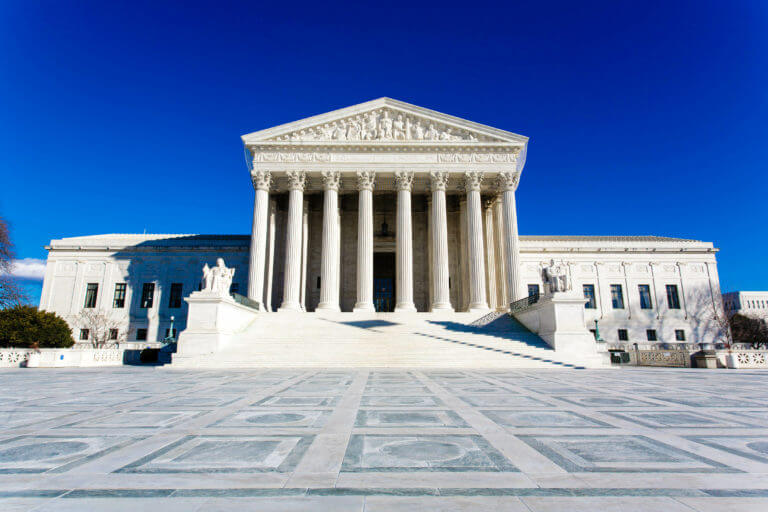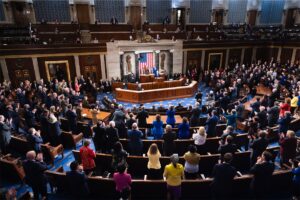The Hill: The Supreme Court should rebuke the EPA’s unconstitutional lawmaking

In a recent article, former Environmental Protection Agency Assistant Administrator Susan Parker Bodine recalls rebuffing a proposed rule that would have required local communities to obtain a costly Clean Water Act permit to transfer their sewage to larger, consolidated municipal treatment systems for treatment and discharge. When Bodine confronted EPA staff and informed them the agency lacked legal authority to require these communities to obtain permits — because they did not discharge pollutants into “navigable waters” — the staff acknowledged the legal problem, yet defiantly replied: “It’s the right thing to do.”
This exchange is emblematic of the modern administrative state. Federal executive branch agencies have the power to regulate only if Congress gives them clear authority, yet agency bureaucrats often ignore the limits on their power and seek to alter laws in a way they believe is “right.” This is not how our Constitution’s separation of powers works.
The Constitution gives federal lawmaking power to Congress alone. The people, acting through elected representatives, determine what is the “right thing to do.”
The EPA is especially notorious for overreach. The agency routinely seeks to alter environmental laws and expand its power to regulate private property with no clear authority from Congress. In recent years, the EPA has sought to remake the energy sector under the Clean Air Act and to aggrandize its power under the Clean Water Act to become a roving land-use planner — an authority the Constitution delegates to the states.
The Supreme Court has taken notice of the EPA’s expansive reading of these statutes and will hear two cases over the next year addressing the limits of the agency’s authority. In West Virginia v. EPA, the court will hear a challenge to the EPA’s authority under the Clean Air Act to require the nation’s energy producers to shift from fossil fuels to “renewable energy.”
After failing to persuade Congress to pass climate change legislation in 2015, then-President Obama used his “pen and phone” to direct the EPA to issue a rule: the “Clean Power Plan.” In the rule, the EPA claimed unprecedented authority to reduce carbon emissions by essentially requiring all existing power plants to “shift” their electric generation from fossil fuels to other sources such as wind and solar. This “generation shifting” would have cost customers billions of dollars in higher energy prices or, in some cases, forced power producers to close completely, costing thousands of jobs.
In 2016, the Supreme Court stayed the rule, pending review in the U.S. Court of Appeals for the District of Columbia Circuit. But after the Supreme Court issued the stay, several years of agency flip flops ensued until the issue came back before the D.C. Circuit in 2020.
In January 2021, the D.C. Circuit held the statute did not limit the EPA’s use of “generation shifting” because Congress delegated the agency broad authority to reduce air pollution. Thus, the court held the agency could set standards requiring the energy industry to use its preferred method of energy production.
The Supreme Court agreed to review the lower court’s decision and oral arguments are scheduled for next week.
The petitioners raise two interrelated constitutional doctrines with potential to set clear limits on the EPA’s power to alter the law: the major questions doctrine and the nondelegation doctrine.
The major questions doctrine holds that the executive branch and its agencies cannot make rules with “deep economic and political significance” without congressional authorization. This doctrine is especially appropriate when agencies find new power to regulate in long-existent, little-used statutory provisions — what the late Justice Antonin Scalia termed finding “an elephant in a mouse-hole.”
West Virginia v. EPA presents a textbook major question. The D.C. Circuit’s broad construction of the Clean Air Act would allow the EPA to transform the American energy market at a significant cost to industry and the public — without clear authorization from Congress. Moreover, before the Clean Power Plan, the EPA had never tried to use “generation shifting” to regulate power plants under the statute.
In the alternative, if Congress did delegate to the EPA authority to transform the energy market, then the Clean Air Act likely violates the nondelegation doctrine. Under that doctrine, Congress cannot delegate its legislative power to executive branch agencies without violating the structural protections of our Constitution. Accordingly, if Congress gave so much discretion to the EPA to essentially create a law — in other words, legislation — the statute would violate the nondelegation doctrine.
In the second case, Sackett v. EPA, which will be heard next term, the court will address the EPA’s authority to regulate private property under the Clean Water Act.
The Clean Water Act has a seemingly simple purpose: protect “navigable waters” from pollution. But the EPA and other federal agencies charged with carrying out and enforcing the statute have continuously sought to expand their power to reach beyond what the law allows. Indeed, with every successive definition of “navigable waters” the EPA has put forward, it has stretched federal authority beyond anything Congress envisioned under the statute by roping in more and more acres of mostly dry land as federally protected waterways.
Chantell and Mike Sackett have experienced this executive overreach firsthand. For 15 years, the Sacketts have been ensnared in a “Kafkaesque” legal battle with the EPA over their homebuilding project in an otherwise built-out residential subdivision near Priest Lake, Idaho. Even though the Sacketts’ property is separated from the nearest navigable water by a road and row of houses, the EPA claims the family violated the law because they failed to obtain a federal permit before building. The EPA ordered them to restore the site to its original condition and refrain from building or face tens of thousands of dollars in per-day penalties.
In Sackett, the court will revisit Rapanos v. United States, a 2006 case that left unclear which wetlands the EPA has jurisdiction over. The EPA since has asserted it can regulate everything from ditches to seasonal puddles, or, in the Sacketts’ case, a vacant lot in a residential subdivision.
The court now has the chance to provide the regulated public, including the Sacketts, with clarity over the scope of the federal government’s authority under the Clean Water Act.
Congress has not amended the Clean Air Act since 1990 or the Clean Water Act since 1987. The American public’s view on what the “right thing to do” about the environment has changed during the past 30 years. And reasonable minds can differ on how private property should be regulated to avoid environmental harm. But one thing has not changed over that time: The foundational principle enshrined in our Constitution is that the legislature, and not executive branch agencies, should determine the nation’s environmental policy.
The Supreme Court should make that clear to EPA.
This op-ed was originally published by The Hill on February 28, 2022.










